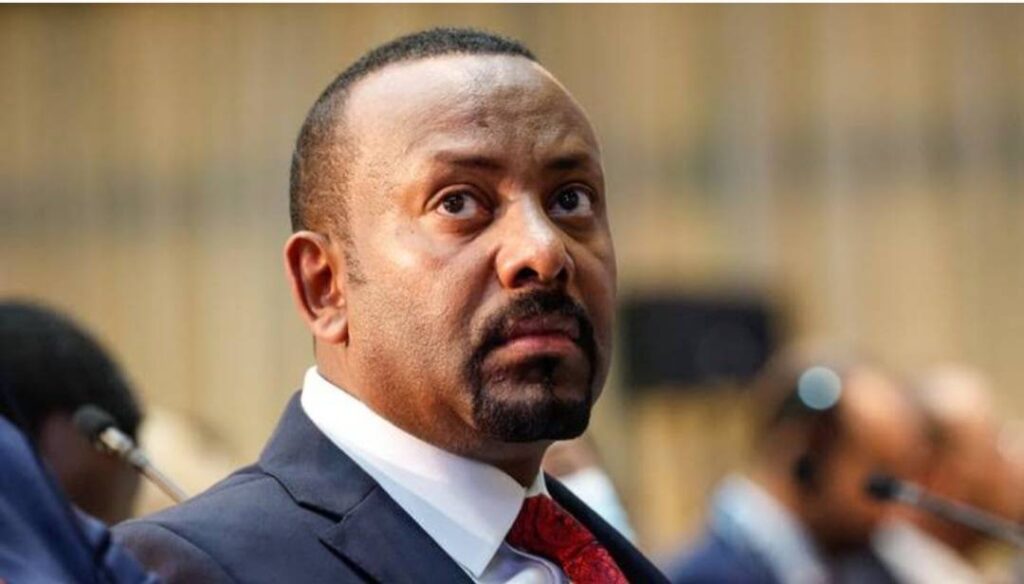Koert Lindijer has been a correspondent in Africa for the Dutch newspaper NRC since 1983. He is the author of four books on African affairs.
Despite the openness of his early days as Ethiopian prime minister, he remained an enigma. Abiy Ahmed was destined for greatness and, with the power of his incantation, he created ‘Abiymania’, a craze with which he wanted to free Ethiopia from war and oppression. His mother had foreseen that he would become the seventh ruler of Ethiopia, following in the lineage of Emperor Menelik II, who established the contemporary Ethiopian state in the late 19th century.
Abiy Ahmed, upon receiving the Nobel Peace Prize in Oslo in 2019, proclaimed that war represents ‘the epitome of hell.’ However, shortly thereafter, he led the strategically significant country of more than 110 million inhabitants into a succession of lethal conflicts, during which ethnic animosities escalated to unprecedented heights. By 2021, the conflict in the Tigray region was known as the deadliest in the world. Since that time, incidents of massacres and widespread arrests have become commonplace.
In 2022, Tom Gardner, The Economist’s Ethiopian correspondent, was forced to leave the country, along with many of his colleagues. More journalists were in prison there than anywhere else in the world. All these contradictions were part of Project Abiy Ahmed, as Gardner’s book is called: the miracle of peace and reconciliation on the one hand, combined with the horrors of war for the sake of one’s own glory.

Grandiose palace
Abiy is building himself a palace in the hills above the capital Addis Ababa, so grandiose that it will cost at least ten billion euros – partly paid for by the United Arab Emirates, a key ally – and is bigger than Windsor, the White House, the Kremlin and China’s Forbidden City combined. He presents himself as a peacemaker, but is a manipulator who sees an opportunity to turn chaos into a victory for himself.
Gardner closely follows the tumultuous events since Abiy’s appointment in 2018 and searches in the closed Ethiopian culture for answers to the question of how the prime minister can take on numerous metamorphoses. He paints a picture of a poorly educated, self-assured and above all religiously inspired leader who turned his office into a pulpit to influence the minds of his subjects. Abiy perceives himself as a messianic figure, driven by an unshakeable conviction in a divine purpose, having been informed by his mother of his divine appointment to rule.
Abiy’s ideas were formed on the boundary between politics and religion. Poverty and powerlessness, Abiy believes, are states of mind, the result of negative thinking or defeatist instincts. His emphasis on personal redemption overlapped with prosperity gospel theology.

One of Abiy’s most influential advisers—Mehret Debebe, a popular TV psychologist and the country’s most famous positive thinking guru—is, like Abiy, a Pentecostal. Pentecostal churches declare that Abiy was sent by God and support his numerous wars. Abiy adorns the capital with buildings inspired by prosperity gospel theology, a vision in which earthly splendor and divine favor are closely intertwined, like the biblical Jerusalem of King Solomon.
Abiy had already steadily built up his career when he was elected prime minister by the ruling party in 2018. Like Putin, Abiy was shaped by his years in the secret service. He served as the minister of science and technology and held a leadership position in Oromia, which is home to Ethiopia’s largest ethnic group, the Oromos.
The ruling party was rotten and without authority after the death of the erudite Meles Zenawi in 2012. Citizens across Ethiopia celebrated Abiy as a figure of liberation; he granted freedom to political detainees and appeared to dismantle the oppressive regime established by Meles. His likeness adorned flags and T-shirts, making him the most cherished leader in the recent history of Ethiopia, which spans over two millennia.

Talisman
Wherever Abiy went, he was welcomed like a rock star. In 2019, the Financial Times put Abiy on the cover under the headline ‘Africa’s new talisman’. Ethiopians trusted him, but no one knew his opinion. Is he an Oromo supremacist or an imperial nationalist? He did not hide his deep distaste for the infidel Marxist students of the 1970s and 1980s who came to power with Meles Zenawi in the 1990s.
Initially, Abiy seemed to champion greater rights for the Oromos, who had been colonized under the imperial rule of the Amharas. But once seated in the former imperial palace of Menelik, he ignored advice from Oromo intellectuals and turned to their ideological and ethnic rivals.
According to Gardner, a certain degree of deceit and deception has always been part of Abiy’s policy. He formed an alliance with Oromo’s arch-enemies, the Amharas, together with neighboring Eritrea against Tigray. At first he supported a federal state with strong powers for regional governments, later he moved toward imperial centralism.

Slaughtered in their beds
Who started the war in Tigray in 2020 is still controversial. Abiy blamed the leaders of Tigray, who had ruled Ethiopia under Meles Zenawi. ‘Abiy would later justify his aggression by pointing to a surprise attack by Tigrayan forces, in which hundreds, perhaps thousands, of unsuspecting Ethiopian soldiers were slaughtered in their beds. But given the heightened readiness of the army at the time, this is highly unlikely,’ writes Gardner. The war in Tigray became a new link in the Abiy Ahmed project.
The involvement of various militias, the Eritrean military, and paramilitary forces, along with the recruitment of minors and incidents of sexual violence, had transformed the conflict into a large-scale and profoundly brutal war, with an estimated death toll exceeding half a million. At the heart of this conflict in the Tigray state, followed by other armed conflicts in Amhara and again Oromia, were clashing ideologies about how to forge the violently formed imperial state into a peaceful, tolerant nation. Abiy turned a political struggle into a profound existential conflict over Ethiopia’s future, and casts himself in a leading role. As throughout history, Ethiopians resolve their conflicts not by compromise, but by war. Gardner tells the story of Abiy’s ascent to heavenly heights in the clear language of The Economist: factual and with a lot of expertise, but lacking in atmosphere. But it is the first book of its kind about the unpredictable Abiy Ahmed and will serve as a standard book on this remarkable leader for some time to come.
This book review was first published by the NRC on 27-9-2024

